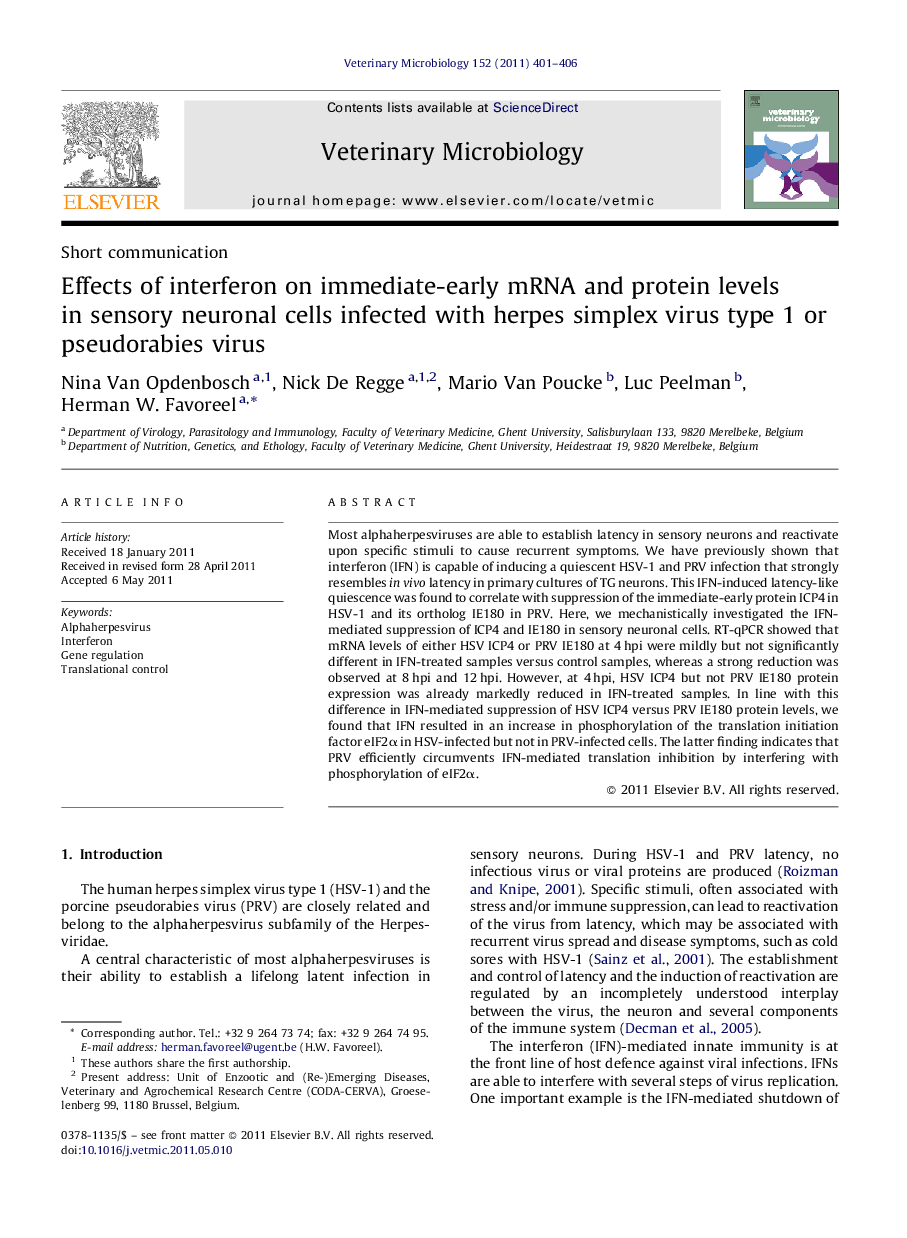| Article ID | Journal | Published Year | Pages | File Type |
|---|---|---|---|---|
| 5801489 | Veterinary Microbiology | 2011 | 6 Pages |
Most alphaherpesviruses are able to establish latency in sensory neurons and reactivate upon specific stimuli to cause recurrent symptoms. We have previously shown that interferon (IFN) is capable of inducing a quiescent HSV-1 and PRV infection that strongly resembles in vivo latency in primary cultures of TG neurons. This IFN-induced latency-like quiescence was found to correlate with suppression of the immediate-early protein ICP4 in HSV-1 and its ortholog IE180 in PRV. Here, we mechanistically investigated the IFN-mediated suppression of ICP4 and IE180 in sensory neuronal cells. RT-qPCR showed that mRNA levels of either HSV ICP4 or PRV IE180 at 4 hpi were mildly but not significantly different in IFN-treated samples versus control samples, whereas a strong reduction was observed at 8 hpi and 12 hpi. However, at 4 hpi, HSV ICP4 but not PRV IE180 protein expression was already markedly reduced in IFN-treated samples. In line with this difference in IFN-mediated suppression of HSV ICP4 versus PRV IE180 protein levels, we found that IFN resulted in an increase in phosphorylation of the translation initiation factor eIF2α in HSV-infected but not in PRV-infected cells. The latter finding indicates that PRV efficiently circumvents IFN-mediated translation inhibition by interfering with phosphorylation of eIF2α.
